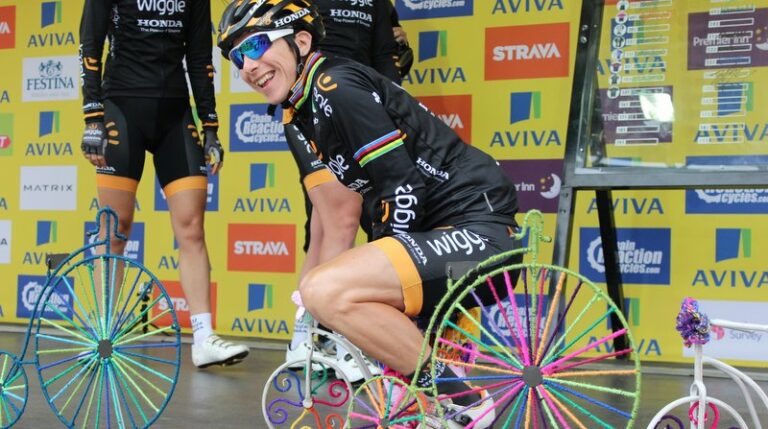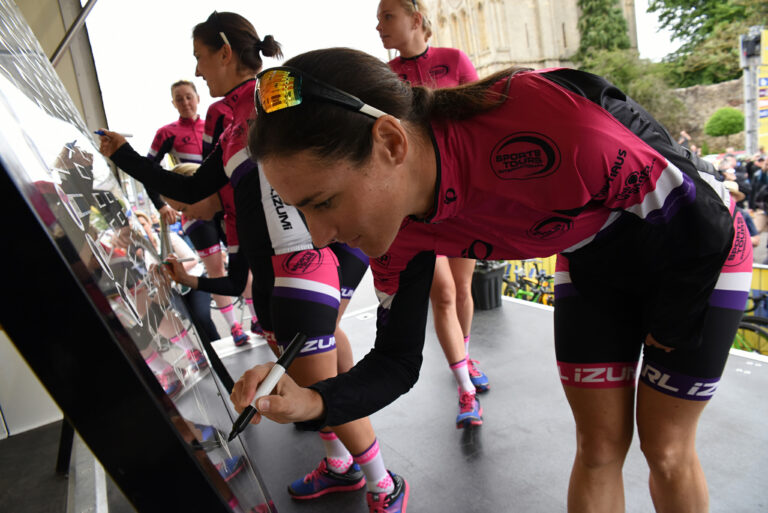
Like snowflakes, no two riders are the same: everyone has their skills, weaknesses and habits.
However, when we asked British Cycling coach Jim Styrin at On the Rivet what the key things nearly all sportive riders could do to improve, he gave us five key pointers.
Jim has been a competitive cyclist since childhood, he’s also a level 2 British Cycling Coach, a level 2 Personal Trainer and gym instructor – so listen up:
1) Core strength
“When you’re riding your bike a lot the temptation is to just do that, but it’s important to work your core muscles so that when you have to really dig deep, you’ve got other muscles contributing to those key cycling muscles. Core strength training will help you to develop better lower back strength, and you can develop more power.”

It’s best to start a core strength training programme in winter so it becomes habit come summer, but you can pick up any time. Jim suggested planks, Russian Twists, Burpees and ‘Sit up and Tuck’ crunches.
Check out this post for more information on cycling specific core strength.
2) Ride more in zone two
A zone two ride is a steady, endurance ride – not the sort that has you gasping for air and bagging QOM’s on Strava. Jim says few riders do enough of these.
Everything You Need to Know About Training With a Heart Rate Monitor
Powermeters: Everything You Need to Know
He explained: “You have to remember that your heart is a muscle like any other – riding in zone two you make it pump hard – so you’ll come back tired, but it won’t be your legs that are tired. If you find it hard to keep the pace steady, set yourself an alarm to go off when you come out of zone two – or work on spinning at a high cadence to keep your mind occupied.”
3) Hill Reps
It’s not all easy street, though, Jim’s all about the top end, intense efforts: “Hill reps are the opposite to zone two rides, they really push you anaerobically. People often do set hill rep intervals, for example 3-5 minute hills, but by the end their form is everywhere.
“I have riders start at the bottom of a hill, and just go as hard as they can until they cant go further, then just stop and turn round, roll down the hill and recover, before going again. You’d still ride a set number, say five, but as you get more tired, you’ll just not go as far up the hill. This really works the muscles responsible for building power on the bike.”
4) Efficiency

Speed isn’t just about fitness, of course – there’s skill in the mix too: “A lot of sportive riders could shave off around 30 minutes from a 50 mile ride just from riding more efficiently.”
“Often you’ll see riders sit up at the start of a hill – they should use the speed they’re carrying from a descent or a flat section to help them on the gradient. That and drafting, people often leave big gaps – it does take confidence to cut those gaps down but you save so much energy.”
5) Preparation
When I asked Jim about the most common errors he sees riders making when stepping up the distance, he listed bonking, and arriving with bikes in need of a service.
“Bonking – not eating and drinking enough – is really common and avoidable. And I often see riders attempting a tough ride on a bike that needs work, the gears aren’t working or the tyres need pumping, those little things make a big difference to performance and enjoyment.”
Don’t let it happen to you – here’s the skinny on keeping hydrated on the bike and the simple science behind gels.
Looking for events? Check out:
10 ‘Century Plus’ Mega Sportives for 2015





